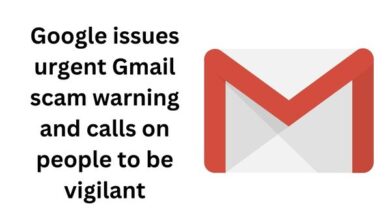7 Proven Ways to Reduce Your Digital Footprints
Safeguarding Your Digital Identity: 7 Strategies to Protect Your Online Privacy and Minimize Data Exposure

Implementing effective strategies to reduce your digital footprints and protect personal data is essential for safeguarding your online privacy and maintaining data security.
Data breach attempts have become more common than ever. Hackers are gaining access to and exposing billions of users’ personal data to third parties.
But have you ever thought about how others gain access to our personal info?
Because we have become accustomed to posting our own information online without thinking of the consequences it may have on our personal security.
By making a few changes to your online accounts and devices, you can actually minimize access to your personal information.
Here, we will discuss some useful tips that prevent the slipping of personal information into the wrong hands.
7 Effective Strategies to reduce your digital footprints and protect your online privacy
Secure Your Online Accounts
In the last couple of years, even big brands like Facebook, Yahoo, Target, Equifax, and countless others have fallen prey to password leaks and data breaches.
Online accounts are always prone to vulnerabilities, so if you have one, hackers might have already leaked some data.
Using a password manager can help you generate hard-to-crack, complex passwords for each online account.
Creating complicated passwords for your online accounts is certainly the most simple yet powerful step you should take to protect your online identity.
Avoid Using Free WiFi
Most companies offer free WiFi connectivity to customers, which you might have used to post your selfie on your social account or transfer data between iPhones, for example.
Sometimes, you connect with the open WiFi network in the coffee shop to attend meetings without realizing how dangerous it could be.
Free WiFi networks lack robust security, so the chances are that you lose some traces of your personal data online as soon as you connect to any open WiFi.
This data is then viewed, processed, and shared with third parties, which pose a serious threat to your security.
Protect Internet Browsing
Websites track most of your online activities. Every single ad or social media button collects your personal data, such as location, age, gender, browsing habit, and more.
The data these websites collect reveals more than you expect and this information is sufficient to determine what kind of person you are.
So if you’re patting yourself on the back for not posting your medical details or religious beliefs on social media channels, someone, somewhere, may already know who you follow.
Using a browser extension, disabling interest-based ads, or accessing the web via a VPN (Virtual Private Network) are some of the best practices that allow for safe browsing.
Watch Out for Links
Cybercriminals explore different ways to reach your inbox and then gather your personal data without you even realizing that you are on the radar.
They often craft phishing scams in a way that appears to be genuine communication from a corporate entity or from a bank.
Scan the emails carefully to find spelling mistakes or grammatical errors. You will receive such emails from an unusual account that indicates the email is a scam.
Refrain from clicking a link or opening attachments that you receive in phishing email messages. Block and delete these contacts right away.
Use Two-Step Authentication
Similar to generating complex passwords, two-step authentication is a robust security protocol that prevents access to online accounts and data.
Users will need to input two different login methods or answer the security questions to log in to their respective accounts.
After you type in your password, you will need to enter the one-time password that you receive on your registered phone number or email account.
Setting up two-step verification for your emails and social accounts will prevent hackers from signing into your account and peeping through your personal information.
Install an Antivirus App
Hacking attempts are not just limited to online accounts; your digital devices are at risk too. Virus attacks may not seem as common, but they still exist.
The data stored in your smartphone or computer is open to external threats as cybercriminals are equipped with tools that can lock your devices to grant them access.
Set up antivirus software to nosedive any malicious element as soon as it enters your digital ecosystem.
When downloading a compatible antivirus app on your device, make sure to get it from a legit resource to avoid negative consequences.
Update Your Operating System
Whether you are using your phone or tablet, or laptop for browsing the web, ensure that all your digital devices are up-to-date.
To enhance the security of your device and data, it’s important to update the operating system running on the device.
The latest version of the OS integrates security patches necessary to maintain and improve the security of your phone or computer.
So, regularly update or upgrade the OS to keep the data breach attempts at bay. Also, delete any apps that you have not used lately for better security and storage.
- How to Increase Internet Download Speed
- How to Fix Internet Speed
- How to Increase Internet Download Speed
- How to fix Laptop is Connected to Mobile Hotspot But No Internet
Conclusion
Maintaining the security of your online accounts and physical devices is important, and it’s your sole responsibility to ensure that security protocols are in place. Following these standard practices will keep your information safe – both online and offline.







